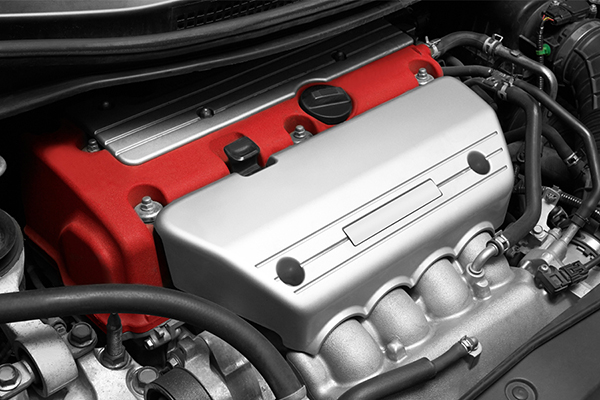
The engine cooling system is one of the six major systems of the engine. Its function is to dissipate part of the heat absorbed by the heated parts in time to ensure that the engine works at the most suitable temperature.
Components of the cooling system
In the entire cooling system, the cooling medium is coolant, and the main components are thermostat, water pump, water pump belt, radiator, cooling fan, water temperature sensor, liquid storage tank, and heating device (similar to radiator).
1) Coolant
Coolant, also known as antifreeze, is a liquid composed of antifreeze additives, additives to prevent metal corrosion, and water. It needs to have anti-freeze, anti-corrosion, thermal conductivity and non-deteriorating properties. Nowadays, ethylene glycol is often used as the main component, and antifreeze with anti-corrosion additives and water is added. The coolant water is preferably soft water, which can prevent the water jacket of the engine from producing scale, which will block heat transfer and cause the engine to overheat. Adding antifreeze to the water also raises the boiling point of the coolant, which has the added effect of preventing premature boiling of the coolant. In addition, the coolant also contains foam inhibitors, which can prevent the air from generating foam under the agitation of the water pump impeller and prevent the water jacket wall from dissipating heat.
2) Thermostat
From the introduction of the cooling cycle, it can be seen whether the thermostat decides to go "cold cycle" or "normal cycle". The thermostat opens after 80°C, and the maximum opening is at 95°C. Not being able to close the thermostat will put the cycle into a "normal cycle" from the start, which will result in the engine not reaching or reaching normal temperature as quickly as possible. The thermostat cannot be opened or the opening is inflexible, which will prevent the coolant from circulating through the radiator, causing the temperature to be too high, or to be normal when it is high. If overheating occurs because the thermostat cannot be opened, the temperature and pressure of the upper and lower water pipes of the radiator will be different.
3) Water pump
The function of the water pump is to pressurize the coolant to ensure that it circulates in the cooling system. The failure of the water pump is usually caused by the damage of the water seal causing leakage, and the failure of the bearing causes abnormal rotation or noise. When the engine overheats, the first thing you should pay attention to is the water pump belt, check whether the belt is broken or loose.
4) Radiator
When the engine is working, the coolant flows in the radiator core, the air passes outside the radiator core, and the hot coolant becomes cold due to heat dissipation to the air. There is also an important small part on the radiator, the radiator cap, which is easily overlooked. As the temperature changes, the coolant will "expand and contract", and the internal pressure of the radiator increases due to the expansion of the coolant. When the internal pressure reaches a certain level, the radiator cover opens and the coolant flows to the storage tank; lower and the coolant flows back into the radiator. If the coolant in the accumulator does not decrease, but the radiator fluid level decreases, then the radiator cap is not working!
5) Cooling fan
During normal driving, the high-speed airflow is sufficient to dissipate heat, and the fan generally does not work at this time; but when running at a slow speed and in place, the fan may rotate to help the radiator dissipate heat. The start of the fan is controlled by the water temperature sensor.
6) Water temperature sensor
The water temperature sensor is actually a temperature switch. When the engine inlet water temperature exceeds 90°C, the water temperature sensor will connect to the fan circuit. If the cycle is normal and the fan doesn't spin when the temperature rises, the water temperature sensor and the fan itself need to be checked.
7) Liquid storage tank
The function of the liquid storage tank is to supplement the coolant and buffer the change of "thermal expansion and cold contraction", so do not overfill the liquid. If the liquid storage tank is completely empty, you cannot just add liquid to the tank, you need to open the radiator cap to check the liquid level and add coolant, otherwise the liquid storage tank will lose its function.
8) Heating device
The heating device in the car is generally not a problem. It can be seen from the cycle introduction that this cycle is not controlled by the thermostat, so turn on the heater when the car is cold, this cycle will have a slightly delayed effect on the temperature rise of the engine, but the effect is really small, so there is no need to heat the engine up. Freeze. It is precisely because of the characteristics of this cycle that in the event of an emergency when the engine overheats, opening the windows and turning on the heating to the maximum will help to cool the engine to a certain extent.
Post time: Jun-23-2020
